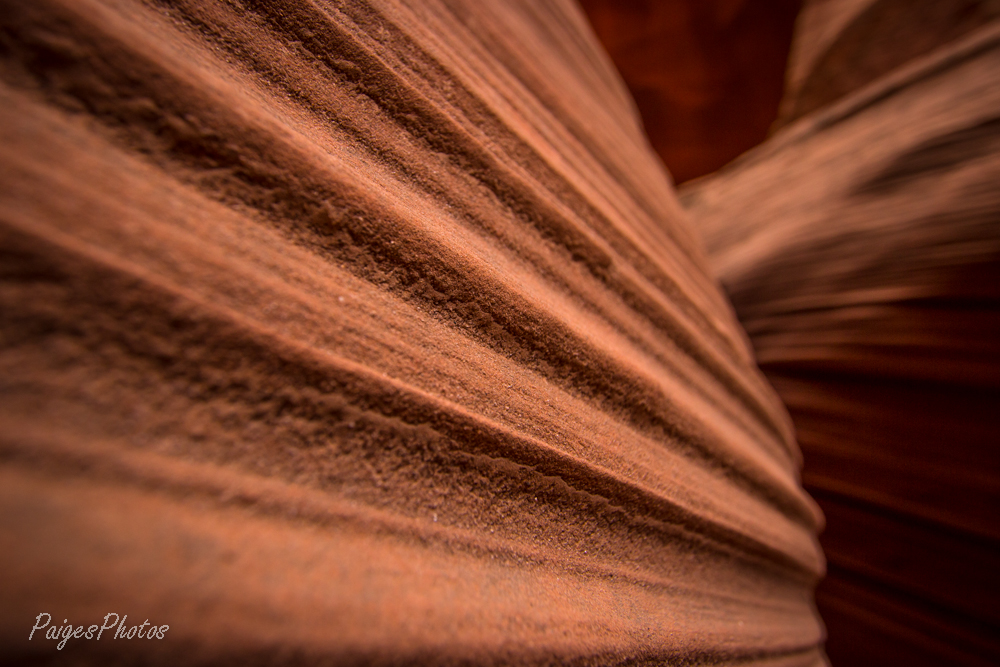Out West: Canyon Geology
Howdy! The following blog post comes to you from "Out West," the American west, where cacti bloom and flash floods create some of the most gorgeous rock formations you've ever seen.

The above shot was taken in Secret Canyon, a slot canyon on the Navajo Indian reservation in Page, Arizona. Slot canyons, according to our guide to Secret Canyon, are unlike the Grand Canyon and other canyons cut and eroded by a continuous water flow such as the Colorado river. A slot canyon is a narrow canyon, formed by the more sudden wear of flood water rushing through rock. The Grand Canyon was created by a combination of forces including the force of the Colorado river, wind, and elevation of the Colorado Plateau. A combination of plate tectonics and a river that drops significantly in elevation from its source in the Rockies created a canyon cut into the very basement rocks of the Precambrian era.
The canyon visible in my images, however, is formed by rushing waters cutting through sandstone and limestone in the desert. Slot canyons are much deeper than they are wide. Secret Canyon, like other slot canyons near Page, Arizona, was formed by erosion of Navajo sandstone, particularly by flood waters. Over the course of multiple monsoon seasons in the desert, the slot canyon develops its characteristically smooth, curved walls due to the force of the water that formed and may continue to form the canyon.
Navajo sandstone, which can contain varying mixtures and amounts of hematite, goethite, and limonite filling the pore space within the quartz sand comprising the sandstone, gives the walls of Secret Canyon their red and yellow colors.
Slot canyons can also be dangerous. They are deep structures formed by running water - therefore heavy rains and monsoons can bring rushing water back to these canyons from miles of surrounding desert. Luckily, we visited Secret Canyon during a drought season!
Slot canyons are both beautiful and tough to photograph. While the walls inside the narrow canyons are steeped in shade, the outside area visible beyond the canyon walls is usually ablaze with sunlight. This means that the 'dynamic range' of light seen when looking up out of the canyon is typically too broad for an SLR camera to capture in a single image - when you exposure for the canyon walls, the sky is way too bright; when you expose for the sky, the canyon walls will be black. However, there are ways to get around the limits of your camera's sensor.
The best times to photography the slot canyon are morning or early afternoon, when the sun is not directly overhead and shining straight down into the canyon. At these times, the diffuse light inside the canyon paints the walls with beautiful reds and yellows. The trick is to set your camera on an appropriate white balance setting (typically 'cloudy' works well), and meter your camera for the light inside the canyon. Another trick, which I used in my photographs above and below, is to take multiple pictures at different exposures / light sensitivities, in order to capture the low light inside the canyon as well as the blue sky outside. By combining three different 'bracketed' exposure images, I was able to appropriately expose the blue sky and clouds outside of Secret Canyon, as well as capture the soft red light inside of the canyon.
While I simply propped myself against the canyon walls while taking several exposure-bracketed images, a tripod is preferred for this technique.
Slot canyons are beautiful and awe-inspiring - just to think that a rush of water created such a structure! Be sure to visit a slot canyon if you are ever in the states of Utah or Arizona. You won't be disappointed! If you have your own pictures of a slot canyon, please share them!


